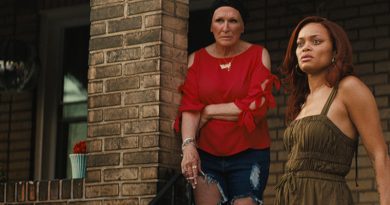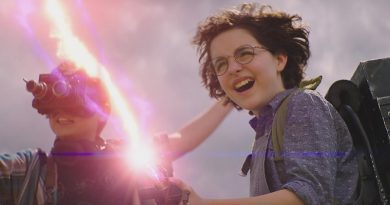Inside Out 9th Anniversary Review: A High-Concept and Sometimes Emotionally Resonant Animated Comedy
* This review contains spoilers *
Last weekend, I took the time to revisit Inside Out in preparation for the upcoming sequel. Nine years have passed since the first movie was released to near-universal acclaim. It even became a huge moneymaker, grossing over US$850 million worldwide and took home the Oscar for Best Animated Feature Film.
The first time I watched Inside Out, I admired the fascinating concept of the inner workings of someone’s mind. Or more specifically, the five most basic emotions: happiness/joy, sadness, fear, disgust and anger. The concept itself may have been done over 70 years earlier in Disney’s 1943 animated short film titled Reason and Emotion, which then became part of Pete Docter’s inspirations for Inside Out. But his main inspiration came from his own parenting experience after observing his daughter, Elie’s change of personality after she entered adolescent age.
Inside Out begins with an intriguing question as Joy (voiced by Amy Poehler) narrates: “Do you ever look at someone and wonder, ‘What is going on inside their head?’” Joy, of course, represents the personification of happiness — bright blue hair in a pixie cut, wearing a green dress and always optimistic. She’s inside Riley’s (Kaitlyn Dias) mind from the day the former is born.
The first seven-minute, pre-credits prologue efficiently establishes not only Joy but also four other different personified emotions inside Riley’s mind. This includes the sullen-looking, blue-faced Sadness (Phyllis Smith), the nervy purple Fear (Bill Hader), the red square-shaped Anger (Lewis Black) and the sassy green Disgust (Mindy Kaling). Joy leads these emotions while Riley’s mind is reminiscent of a control centre a.k.a. the Headquarters.
Since the human mind is the body’s most complex organ and structure, Docter and his team of animators gamely stretched their imaginations on how everything connects inside Riley’s mind. We get to see how memories are stored in the form of brightly-coloured orbs. What defines Riley’s unique characteristics are divided into five personalities in the form of five floating Islands of Personality. Among them are Friendship Island, Honesty Island and Hockey Island, where the latter happens to be Riley’s favourite sport.
But everything changes when the now 11-year-old Riley moves from the happy home of Minnesota to San Francisco to accommodate her father’s (Kyle MacLachlan) new job. That means she needs to get used to her new surroundings, even though the place looks disappointingly rundown. Trouble starts when Sadness, who just can’t keep her hands off does something that, well, messes up Riley’s memories.
Long story short, an accident happens which ends up with Joy and Sadness sucked out of Headquarters from a pneumatic tube transport of sorts, leaving the other three behind struggling to manage Riley’s emotions.
From there, Joy and Sadness’s journey together deep inside Riley’s memory landscape structures like a road movie with a dash of buddy comedy. The second act of the movie, focusing primarily on Joy and Sadness’ misadventures and meeting new characters including Riley’s pink elephant-like imaginary friend nicknamed Bing Bong (Richard Kind), treads familiar ground with the kind of formulaic structure that feels more of a hit-and-miss affair.
But Docter still manages to pull off a few worthwhile moments I do enjoy watching the mismatched partners-type chemistry between Joy and Sadness. Relatable moments like how Riley awkwardly tries to fit in and introduces herself to her class at school, while another scene involves the way she’s acting strange, rude and disgruntled talking to her parents while having dinner together at home.
Inside Out hits all the right emotional notes during the pivotal third act, one of which relates to the fate of a character stuck in the dark pit of Riley’s Memory Dump. The movie also wraps up with an affecting message that resonates the most. A message where it’s okay to be sad rather than living in denial. This also reflects Joy, the persistent leader who’s been trying hard to keep Riley as happy and positive as possible. Throughout the movie, Joy sidelines Sadness like an outcast because she doesn’t want her to go near Riley’s memories a.k.a. the orbs. It wasn’t until the end that Sadness played an important part in shaping Riley as part of being human.
Inside Out is far from the masterpiece that I hoped for even after rewatching it. It’s more of a good but not great kind of animated feature. Certainly not up to the peak Pixar level seen in movies like Finding Nemo (2003), WALL-E (2008) and Toy Story 3 (2010).





